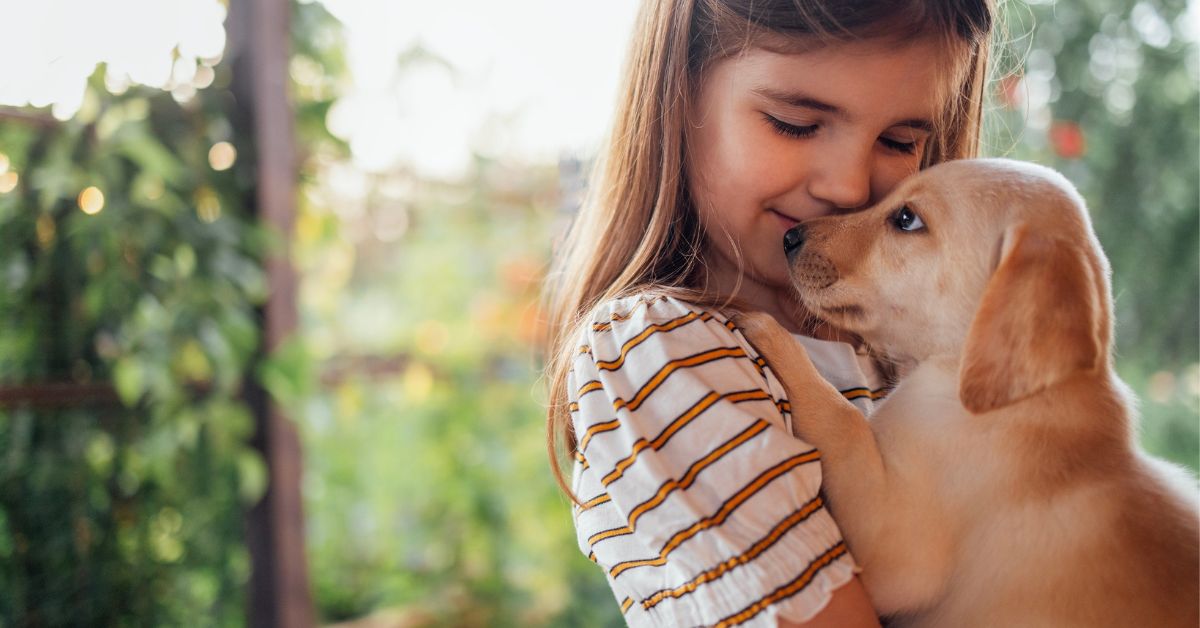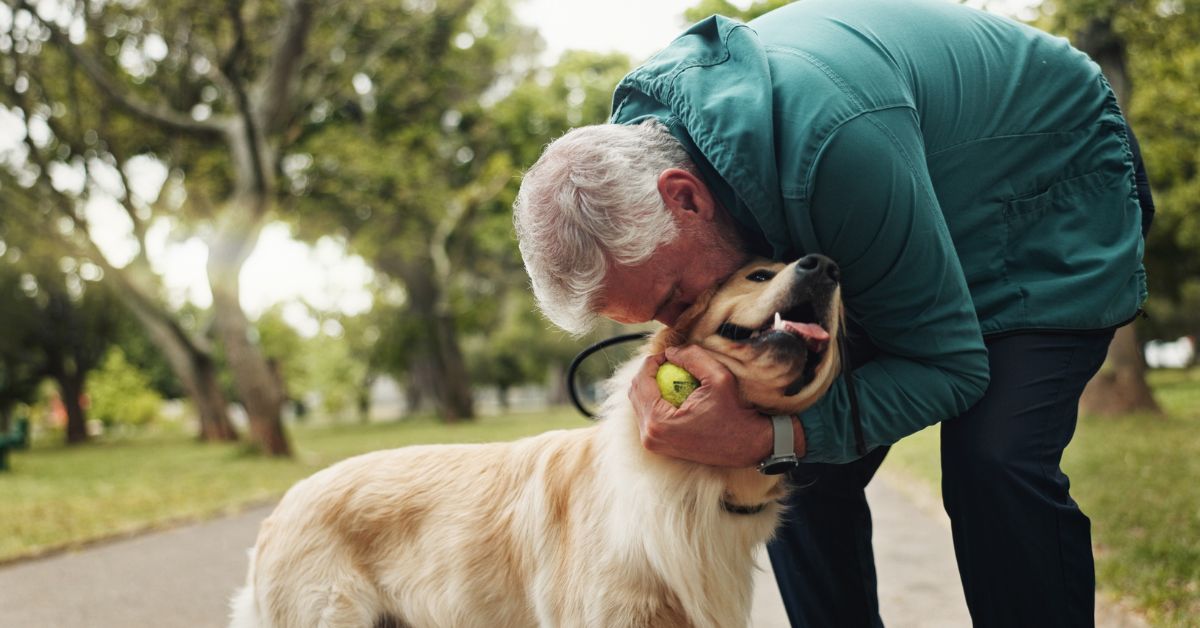
Labrador Retrievers & Kids: Why They Make a Great Pair
When it comes to choosing the ideal dog for a family with children, few breeds are as universally loved, respected, and recommended as the remarkable Labrador Retriever. Kind-hearted, unwaveringly loyal, and endlessly patient, Labradors have earned their stellar reputation as one of the best family dogs in the world — and for exceptionally good reasons that extend far beyond simple popularity. Their exceptional personalities, combined with their inherent behavioral traits and adaptable nature, are perfectly suited to life alongside curious toddlers, energetic school-age kids, and even growing teens navigating the complexities of adolescence.
The relationship between Labradors and children represents one of the most successful inter-species partnerships in the domestic animal world, built on foundations of mutual trust, unconditional love, and shared adventures that create lasting memories for entire families. Understanding why this partnership works so beautifully can help families make informed decisions about adding a Labrador to their household while maximizing the benefits for both children and dogs.
Let's explore in comprehensive detail why Labradors and children make such an extraordinary, time-tested match that has brought joy to millions of families worldwide.
Understanding the Labrador Retriever Temperament: Nature and Nurture Combined
The Genetic Foundation of Family-Friendly Behavior
The exceptional temperament that makes Labradors such outstanding family dogs isn't accidental—it's the result of centuries of selective breeding that prioritized cooperation, intelligence, and gentle handling. Originally developed as working dogs in Newfoundland, Labradors were bred to work closely with fishermen in challenging conditions, requiring dogs who could remain calm under pressure, follow complex instructions, and work cooperatively with humans.
This working heritage created dogs with remarkable emotional stability and stress tolerance that translates perfectly to the sometimes chaotic environment of family life with children. Unlike breeds developed for guarding or hunting alone, Labradors were specifically selected for their ability to work as partners rather than independent operators, making them naturally inclined to integrate seamlessly into family structures.
Socialization and Environmental Adaptability
Modern Labradors retain their ancestors' remarkable adaptability and social intelligence, making them exceptionally capable of adjusting to the varying energy levels, moods, and developmental stages of children. This adaptability extends beyond simple tolerance to active engagement and emotional attunement that allows Labs to become true companions rather than merely pets.
1. Gentle and Patient by Nature: The Foundation of Trust
Inherent Stress Tolerance and Emotional Regulation
Labrador Retrievers are genuinely famous throughout the dog world for their calm, tolerant, and remarkably stable temperament. Unlike some high-strung or sensitive breeds that may become anxious or reactive, Labs possess an almost supernatural ability to remain unruffled by the noise, sudden movements, unpredictable behavior, and general chaos that naturally accompanies children of all ages.
Whether a curious toddler accidentally tugs their ear while exploring, an excited child tries to climb over them during play, or a group of kids squeals with joy during an intense cuddle session, a well-socialized and properly trained Lab typically responds with patience, gentle acceptance, and often what appears to be amused tolerance of childhood antics.
The Science Behind Labrador Patience
This forgiving attitude isn't just personality—it's supported by the breed's neurological makeup. Research in canine behavior has shown that Labradors have lower baseline stress hormone levels and more stable fight-or-flight responses compared to many other breeds, making them naturally better equipped to handle the unpredictable nature of family life with children.
Their large size also contributes to their stability—unlike small dogs who might feel threatened or overwhelmed by children's movements, Labs are sturdy enough to remain comfortable and confident during even enthusiastic interactions with kids.
Essential Boundaries and Safety
This forgiving attitude is absolutely essential in a family environment where children are still learning appropriate boundaries and social cues. Children naturally test limits and make mistakes while developing their understanding of how to interact respectfully with animals. Labradors seem to intuitively understand this developmental process, and their capacity to absorb minor chaos and inappropriate handling without reacting aggressively or fearfully is one of the key reasons they're so universally beloved as family pets.
However, it's crucial to note that even the most patient Labrador deserves respect and should never be deliberately provoked or mistreated. Teaching children appropriate interaction with dogs remains essential for maintaining the trusting relationship that makes Labs such wonderful family members.
2. Affectionate and Loyal Companions: Building Lifelong Bonds
Deep Emotional Connections and Family Integration
Labs don't just thrive on human interaction—they actively seek it out and form profound, lasting bonds with their families, with children often becoming their most cherished companions. They're not merely tolerant of kids; they actively seek their company, often preferring children's energy and playfulness to adult calmness.
A typical Labrador will choose to lie peacefully near a napping child, creating a protective presence that provides comfort to both child and parents. They'll follow their favorite children from room to room throughout the day, participating in daily routines and becoming integrated into the family's rhythm. During quiet reading time, homework sessions, or movie nights, Labs often curl up beside children, offering silent companionship that enhances these peaceful moments.
Emotional Intelligence and Intuitive Understanding
That deep loyalty and emotional connection means children grow up with what feels more like a devoted sibling than a pet—a best friend who is always close by, offering silent comfort during sad days, shared excitement during joyful celebrations, and steady presence during life's ordinary moments. This sense of emotional security and unconditional acceptance that Labs provide can significantly impact a child's emotional development and self-confidence.
Labs demonstrate remarkable emotional intelligence, often sensing when children are upset, stressed, or need comfort. Many families report their Labrador instinctively providing extra attention and gentle interaction when children are sick, sad, or going through difficult periods.
The Psychological Benefits for Children
The relationship with a loyal Labrador can provide children with crucial psychological benefits including increased empathy, responsibility, and emotional regulation skills. Having a non-judgmental companion who loves them unconditionally can boost children's self-esteem and provide a safe relationship for practicing social and emotional skills.
3. Playful and Energetic: The Perfect Activity Partners
Matching Energy Levels and Play Styles
Children need playmates who can keep up with their boundless energy and enthusiasm for adventure—and Labradors are more than up to the challenging task. With their strong, athletic build, natural love for games and activities, and seemingly endless enthusiasm for fun, Labs are ideal outdoor companions for children who enjoy running, throwing balls, playing in the yard, or engaging in more complex games and activities.
Their natural enthusiasm for fetch, swimming, hiking, and general silliness makes them perfect partners for active kids who need outlets for their energy. Unlike adult family members who might tire of repetitive games, Labs seem genuinely delighted to play the same game dozens of times, matching children's love for repetition and routine in play.
Adaptive Play Behavior
Even more impressive is that Labradors are remarkably skilled at adjusting their play style based on who they're interacting with and the specific situation. They instinctively tend to be gentler and more careful with toddlers, using softer mouth pressure during tug-of-war and being more cautious about their movements. With older children, they can be more energetic and robust in their play, engaging in running games and more athletic activities.
This natural awareness and adjustment ability, combined with their inherent good nature and desire to please, makes them excellent playmates across a wide age range within the same family. A Lab can play gently with a 3-year-old in the morning and engage in more vigorous activity with a 10-year-old in the afternoon.
Physical and Mental Benefits for Children
Playing with a Labrador provides children with crucial physical exercise, fresh air, and outdoor time that's increasingly important in our digital age. The motivation to play with their dog can encourage children to be more active and spend more time outside, contributing to better physical health and emotional well-being.
4. Eager to Please and Easy to Train: Setting Up Success
Intelligence and Trainability Advantages
For families with young children, having a well-behaved, reliably trained dog isn't just convenient—it's absolutely essential for safety and household harmony. Labradors are consistently ranked among the most trainable and intelligent breeds in the world, combining natural intelligence with an genuine desire to make their humans happy and proud.
This combination means Labs pick up new commands quickly, retain training well over time, and are generally much easier to house-train than many other breeds. Their food motivation and praise-seeking behavior make them responsive to positive reinforcement training methods that are safe and appropriate for children to observe and even participate in.
Family Training Opportunities
Whether you're teaching basic commands like sit and stay, more complex behaviors like walking politely beside a stroller without pulling, or specialized skills like retrieving specific items, Labs learn quickly and respond enthusiastically to consistent, positive training approaches.
This ease of training makes them much less stressful to integrate into family life with children and even opens valuable opportunities for involving kids in basic dog training activities. Children can learn responsibility, consistency, and animal communication skills by participating in age-appropriate training activities with their Lab.
Building Mutual Respect and Communication
Training sessions provide excellent opportunities for children and Labs to develop mutual respect and communication skills. Children learn the importance of clear communication, consistency, and patience, while Labs learn to respond to multiple family members and respect household rules that keep everyone safe and comfortable.
5. Protective Without Being Aggressive: Natural Guardians
Gentle Vigilance and Family Protection
While Labradors are not typically considered guard dogs in the traditional sense of aggressive property protection, they demonstrate a deep, natural protectiveness toward the people they love—especially children who they often view as their special responsibility.
Many Lab owners consistently report their dog instinctively watching over children during play, positioning themselves strategically between the child and any perceived risks, gently barking or alerting when something feels unusual or concerning, and showing increased vigilance when children are engaged in potentially risky activities.
Intuitive Risk Assessment
This kind of quiet, intelligent vigilance offers parents significant peace of mind without the concerns that come with more aggressive protective breeds. While a Labrador is highly unlikely to show aggression toward people, their alert presence and natural protective instincts are often enough to deter unwanted attention or alert the household to potential problems.
Labs often demonstrate remarkable judgment about genuine threats versus normal activities, rarely showing inappropriate protective behavior while maintaining their vigilant care for family members.
Teaching Children About Safety
The protective nature of Labs can also serve as a teaching tool for children about safety awareness and trusting their instincts. Children learn to observe their dog's behavior and responses as additional information about their environment and potential risks.
6. They Grow Together: Lifelong Developmental Partnerships
Synchronized Life Stages and Shared Growth
Perhaps one of the most touching and developmentally significant aspects of a Lab-child relationship is how they literally and figuratively grow up together, creating shared experiences and mutual development that benefits both species throughout their lives.
A child who starts life with a Labrador puppy by their side will experience far more than simple companionship—they'll participate in a complex, evolving relationship that teaches countless life lessons and provides emotional support during critical developmental periods.
Learning Responsibility and Empathy
Children learn genuine responsibility through daily care activities like feeding, grooming, and walking their Lab. These tasks teach routine, dependability, and the understanding that other living beings depend on their care and attention. The immediate feedback from a happy, healthy dog reinforces positive behavior and responsibility.
They'll practice empathy and emotional expression by learning to read their dog's moods, needs, and communication signals. This emotional attunement often transfers to improved social skills with humans and increased emotional intelligence overall.
Emotional Support Through Life Transitions
When life inevitably presents challenges—starting school, family changes, friendship difficulties, or other childhood struggles—children have a four-legged friend who never judges, never walks away, and always offers comfort through simple presence and unconditional love.
Research has shown that children who grow up with dogs often demonstrate better stress management, higher self-esteem, and improved social skills compared to children without pets.
Creating Lasting Memories and Values
For many families, those early bonds formed with a Labrador leave lasting emotional footprints that influence children's values and relationships throughout their lives. Years later, adults often speak with deep emotion about the dog who was present for every significant childhood memory, teaching them about love, loss, loyalty, and the importance of caring for others.
Age-Specific Benefits: Labs for Every Stage of Childhood
Toddlers and Preschoolers (Ages 2-5)
For very young children, Labs provide gentle companionship and patient interaction that helps develop motor skills, language development, and emotional regulation. The non-threatening presence of a calm Lab can help shy children build confidence while providing active children with a calming influence.
School-Age Children (Ages 6-12)
During the school years, Labs become adventure companions and emotional support systems. They provide motivation for outdoor activity, opportunities for responsibility development, and steady companionship during the social and academic challenges of growing up.
Teenagers (Ages 13-18)
Adolescents often find their Lab to be a non-judgmental confidant during the emotional turbulence of teenage years. The consistency and unconditional love from their dog provides stability during a period when many other relationships become complex and challenging.
Safety Considerations and Best Practices
Proper Introduction and Socialization
While Labs are naturally good with children, proper introduction, socialization, and training remain essential for optimal relationships. Puppies should be exposed to children of various ages in positive, controlled circumstances to develop appropriate interaction skills.
Teaching Children Appropriate Interaction
Children must learn to respect their Lab's space, recognize signs of fatigue or discomfort, and understand appropriate play boundaries. This education protects both children and dogs while strengthening their relationship.
Supervision and Safety Protocols
Despite Labs' excellent reputation with children, adult supervision remains important, especially with very young children or during high-energy activities. Even the gentlest dog can accidentally knock over a small child during enthusiastic play.
Health and Wellness Benefits
Physical Activity and Outdoor Time
Having a Lab encourages families to spend more time outdoors, providing children with increased physical activity, fresh air, and connection with nature. Regular walks, play sessions, and outdoor adventures contribute to better physical health for the entire family.
Mental Health and Emotional Support
The companionship of a Labrador can significantly benefit children's mental health by providing stress relief, emotional support, and a sense of purpose through pet care responsibilities. The routine and structure required for dog care can be particularly beneficial for children with anxiety or attention challenges.
Immune System Benefits
Research suggests that children who grow up with dogs may have stronger immune systems and lower rates of allergies and asthma, though families should consult healthcare providers about specific health considerations.
Choosing the Right Lab for Your Family
Puppy vs. Adult Dog Considerations
Families must consider whether a puppy or adult Lab better fits their situation. Puppies require extensive training and supervision but grow up with children, while adult Labs may be calmer and already trained but require adjustment to family life.
Breeder Selection and Health Considerations
Choosing reputable breeders who prioritize temperament testing and health screening helps ensure families receive Labs with the gentle, stable temperaments that make them excellent family dogs.
Preparation and Integration Strategies
Successful integration of a Lab into family life requires preparation including home safety modifications, establishing routines, and ensuring all family members understand their roles in dog care and training.
Long-Term Commitment and Considerations
Lifespan and Life Changes
Labs typically live 10-14 years, meaning they'll be part of children's lives from early childhood through potentially college years. Families should consider how their circumstances might change and their continued ability to provide excellent care throughout the dog's lifetime.
Financial Responsibilities
Caring for a Lab involves significant ongoing expenses including food, veterinary care, grooming, and potential emergency medical costs. Families should budget for these expenses to ensure they can provide optimal care throughout the dog's life.
Travel and Lifestyle Adaptations
Owning a Lab requires lifestyle adjustments including travel planning, daily exercise commitments, and home maintenance considerations that families should carefully consider before making this long-term commitment.
Final Thoughts: A Partnership Built on Love
There are countless reasons why Labrador Retrievers remain one of the most popular and beloved dog breeds in the world, but for families with children, their exceptional personality and behavioral traits stand out above all other considerations. Gentle yet playful, loyal yet independent, protective yet peaceful, Labs don't just fit into a family structure—they become an integral part of its heart, contributing to its daily rhythms and creating lasting memories that span generations.
Whether it's an energetic game of backyard fetch that burns off excess energy after school, a comforting snuggle on the couch during homework time, or a reassuring presence during a thunderstorm or difficult night, a Labrador Retriever offers something truly priceless: unconditional love wrapped in soft fur, expressed through a constantly wagging tail, and delivered with the kind of loyalty that makes childhood memories magical.
The decision to bring a Labrador into a family with children represents more than adding a pet—it's choosing to provide children with a devoted companion who will teach them about responsibility, empathy, loyalty, and unconditional love while creating memories that will last a lifetime. In return, these remarkable dogs receive the loving family environment they were bred to thrive in, completing a partnership that benefits everyone involved in ways that extend far beyond simple companionship.
For families ready to make this commitment, the reward is a relationship that enriches childhood, strengthens family bonds, and demonstrates daily the profound connection possible between humans and their four-legged best friends.
External Resource: Labrador Retriever Overview – American Kennel Club
📸 Photo Credits: Featured images in this article are licensed from Shutterstock



